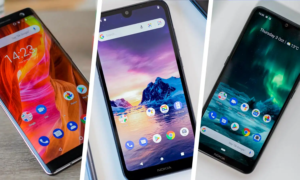
Wearable technology has observed a noteworthy rise in fame in recent years, providing a wide range of applications and devices that flawlessly integrate into users’ daily lives.
One vital feature of creating successful wearable applications is confirming a unique user experience and delivering spontaneous ways for users to interact with these devices.
Gesture recognition has appeared as a promising technique to improve user experience and interactivity in wearable applications. However, it still requires an implementation guidance and marketing to the general audience from a renowned digital consulting service provider.
By capturing and rendering human gestures, a wearable app development company can integrate features, that can provide hands-free operation, natural user interfaces, and augmented mobility.
In this article, with the help of a research conducted by a renowned software company Austin, Texas, we will study the potential of gesture recognition in wearable applications, debating the technologies, layout contemplations, applications, user experience, and future trends.
Gesture Recognition Technologies and Methods
Gesture recognition in wearables depend on several technologies and techniques.
Accelerometers and gyroscopes are usually used to capture the signal of the wearer’s body, while cameras and penetrating sensors allow more progressive computer vision-based recognition.
Machine learning algorithms play a vital role in rendering the captured data, identifying patterns, and mapping them to explicit gestures.
Methods such as convolutional neural networks (CNNs), hidden Markov models (HMMs), and support vector machines (SVMs) are normally used for precise gesture recognition.
Sensor fusion methods, which combine data from multiple sensors, improve the complete accuracy and toughness of the recognition procedure.
Layout Considerations for Gesture-Based Interactions
Designing gesture-based interactions in wearables necessitates cautious deliberation of some factors.
First and foremost, the intricacy and perception of gestures must be stable.
Gestures should be easy to accomplish and identify while offering users with a sense of control.
Ergonomics is another crucial point, guaranteeing that gestures can be contentedly performed without triggering strain or fatigue.
User response is vital to lead the design process, and wearable applications should deliver clear and brief feedback to users to specify whether gestures have been documented or not.
Moreover, privacy concerns should be discussed, as gesture recognition may include capturing and processing delicate data.
Applications and Use Cases
Gesture recognition opens up an extensive range of applications and use cases in wearable technology.
In gaming, users can play with characters or make use of virtual environments through hand and body gestures, delivering a more in-depth experience.
In healthcare industry, wearable devices can track gestures to support in physical therapy, letting patients to perform workouts correctly.
Virtual reality applications profits from gesture recognition by allowing users to operate virtual objects or steer virtual environments without the need for handheld controllers.
Gesture-based interactions also find use in smart home automation, where users can control devices through simple hand movements or gestures, providing a more convenient and intuitive experience.
User Experience and Feedback
User experience is of greatest importance when applying gesture-based interactions in wearables.
Designers must emphasis on developing instinctive and user-friendly experiences that align with users’ psychological models.
Utilization testing and collecting feedback from users are vital steps in the design process.
Observing users interacting with the wearable application and imploring their opinions can offer important insights for refining gesture recognition accuracy, gesture intricacy, and overall user approval.
Iterative design cycles that include user response help improve the gestures and the general user experience.
Future Trends and Challenges
The future of gesture recognition in wearables carries hopeful progressions and poses challenges.
One possible trend is the incorporation of haptic response, which can deliver tangible sensations or vibrations to improve the user’s perception and augment the general user experience.
Multimodal interaction, joining gestures with voice commands or eye tracking, can deliver more assorted and natural methods for users to interact with wearables.
Nevertheless, challenges such as privacy apprehensions related to capturing and processing user gestures, guaranteeing high recognition precision across different environments and user disparities, and enhancing power effectiveness for wearable devices remain areas that need to be solved to unleash the true potential of gesture recognition in wearable application development.






